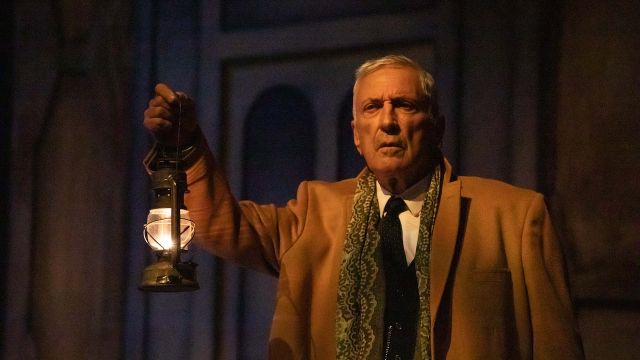Ghost Story Thrills Waters
Australian acting legend John Waters, now in his mid-seventies, has returned to our stages in the classic thriller The Woman in Black, talks to Coral Drouyn.
If a “Legend” is someone whose name everyone knows and is part of our entertainment history, then surely John Waters qualifies on every count. Star of numerous iconic television shows, and musicals like Hair, Oliver!, and They’re Playing Our Song, Waters, at a time when many would be content with gardening – or doing the Grey Nomad thing – is reprising his role as Arthur Kipps in Susan Hill’s suspense-filled ghost story The Woman in Black. Of course, for many of us, he is synonymous with the ABC’s legendary children’s show Playschool – but that is more than thirty years ago, and it shouldn’t surprise any of us to learn that he is now a grandfather.
So why not take it easy and just bask in the glory of celebrity? It’s a question I have to ask him.
“Well, first of all, if I am a celebrity, I’m certainly not rich enough to bask. That only happens in places like Hollywood,” says John self- deprecatingly.
“I’m a working actor, and I do need to earn a living. Yes, I have amazing grandkids, but I also have three teenagers at home, and they have years to go before they are self-sufficient.”
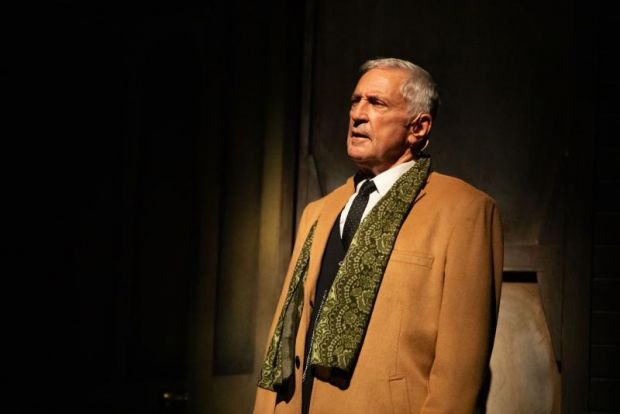
And the second reason?
“Well, it’s not really second,” John responds. “It’s equal first if you like. I LOVE the play and I love the part of Arthur Kipps. So, the chance to do it again, now that I’m almost two decades older, is exciting. You don’t often get a chance to re-visit a character and explore his reactions from a different perspective. And audiences have also changed in that time. The world has changed; it’s going to be a genuine thrill to see how they react to what is a simple, but chilling, ghost story.”
Susan Hill’s The Woman in Black started life as a story, but now is the second longest running play in West End history (The Mousetrap is the first). I ask John why he thinks it still has such appeal after decades of phenomenal success.
“Well,” he responds, then pauses to think … “it’s a period piece and because of that it doesn’t date like some more contemporary plays. There’s also a fascination with the past, a period we’ve heard about but haven’t experienced. And at its heart it’s about isolation, and fear, especially of the unknown, and we’ve all experienced that at times in our lives. It’s also probably true to say that we all like the adrenalin rush of being scared out of our wits occasionally.”
But we don’t all believe in hauntings and ghosts, I challenge, and John laughs.
“That’s where stagecraft comes in and creates its magic,” he answers.
“You know, they made a film of it with Daniel Radcliffe (Harry Potter) but, to me, it just didn’t work. If you actually SEE everything laid out in front of you, you take away the element of imagination. A ghost story must be about what you FEEL, not what you see. The feeling of fear is far greater than any visual. The way an individual - in this case Kipps - reacts to horror is palpable. That’s why it works so well on stage; there’s just me and Daniel McPherson - Stephen Mallatratt’s decision to make the play a two-hander was inspired - and the rest is up to the audience.”
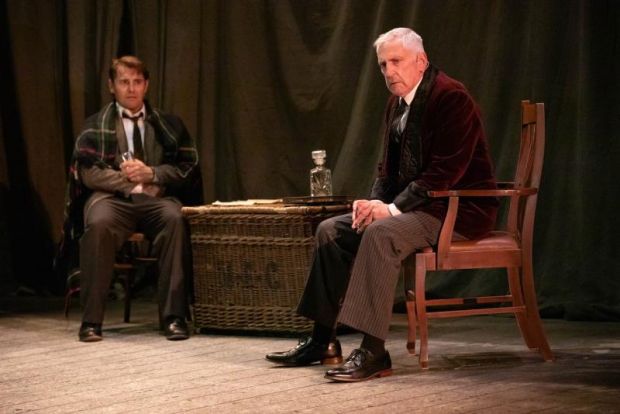
Certainly, the play has its fans around the world and is lauded as a classic example of Gothic horror, and John relishes it, having previously played the role in 2006. He’s excited as he tells me, “It is genuinely frightening. We feel it on stage and the audience shares that with us. It’s compelling.”
As with Arthur Kipps in this play, John likes to develop deep insight into his characters. Nowhere was that more apparent than in his brilliant John Lennon tribute Looking Through a Glass Onion, which played to critical acclaim in both London and the USA as well as touring for more than two years here in Australia.
“That was a real labour of love, because it was so much a part of me and my roots as a teenager,” he explains. “I was in my teens in London when I discovered Lennon - and part of me believed I could be that person who musically conquered the world. I was already living in Australia and in my early twenties when The Beatles broke up for good, and suddenly the world seemed unconquerable again.”
Although John’s father had been a supporting actor in British films for most of his life, John never trained or took an acting class.
“Acting just wasn’t on my radar,” he explains. “I think I was obsessed with music, being in a group, chasing the big break. Music seemed to me far and away more exciting than learning lines and being told where to stand.”
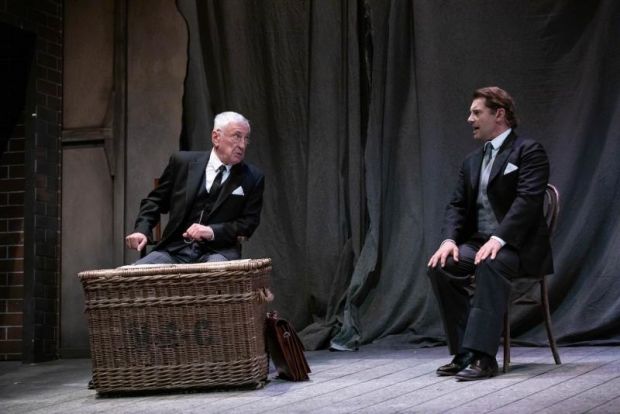
He was only 16 when he made his professional debut as a musician, with British Blues group The Riots, but he was already looking forward.
“I came to Australia for a holiday,” he tells me. “I brought the guitar with me in case I could pick up some gigs to help pay my way. Remember, it was the late sixties and perhaps we hadn’t really recognised the value of local talent. It was an advantage back then to have come from overseas – even if you were nobody – but, rightly, not so now.”
He met a lot of people and, before he had turned twenty, he heard that Hair, the controversial musical which had opened in April ‘68 on Broadway, was coming to Australia. It sounded interesting to the teenager, anarchic and with lots of contemporary music, so John put his name down to audition, not expecting too much, and continued gigging. Miraculously he was called back from the audition and initially given a part as a member of the tribe, later graduating to take over from the original Claude, Wayne Matthews.
“That was a turning point for me,” he explains, “because I had no idea whether I could act or not, but I knew I could handle the songs. And yes, I got my kit off at the end, along with everybody else.”
But John still saw himself as a singer who could act a bit, rather than an actor who could sing.
“I thought the show would be a one off for me and I would still pursue music as my future,” he recalls.
So, what happened to change his mind?
“Well, two people made me offers,” he recalls. “One was Harry M. Miller, who was a producer of Hair. He wanted to manage me as a musician – a singer and recording artist – which had been my burning ambition. The other was perhaps Sydney’s best-known theatrical agent at the time – Gloria Payton. She saw something in me that made her believe I had a future as an actor. She raised possibilities I had never thought of, despite my dad’s (acting) background.”
He pauses for a moment.
“But here’s the clincher,” he continues. “Harry M wanted to take 20% of all my earnings as my manager, but Gloria only wanted 10% commission as my agent. I have a Scottish background, and I guess I was stingy enough to want to save 10%! So, I became an actor who could sing - officially!”
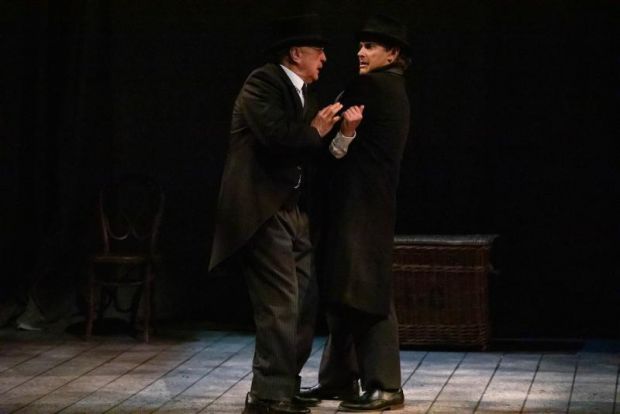
John’s amazing list of acting credits prove that he made the right choice – and he’s still had a singing and recording career to satisfy his original ambition.
And we get to see him in what is possibly his last stage appearance – though I wouldn’t bet on it – when he and Daniel McPherson open the play at QPAC before embarking on an extensive tour. And there is another reason John is looking forward to this reprise.
We all know that as we get older our long-term memory is stronger, but our short-term memory doesn’t work as well. John is acutely aware of that.
“I’m not sure I would want to learn a lengthy script like this from scratch at this stage in my life,” he tells me. “It does get more difficult to retain lines. But once you’ve done a play, especially in a long run, it’s much easier the second time around. Actors have a recall which is like muscle memory, so revisiting the script will hopefully be like checking in with an old friend.”
And that’s as exciting for us as it is for John.
Photographer: Justin Nicholas
Remaining tour dates:
Canberra Theatre Centre - 9 - 14 July
Wollongong - IPAC – 17 -21 July
Newcastle - Civic Theatre – 23 -27 July
Sydney - Theatre Royal - 30 July – 18 August
Subscribe to our E-Newsletter, buy our latest print edition or find a Performing Arts book at Book Nook.

